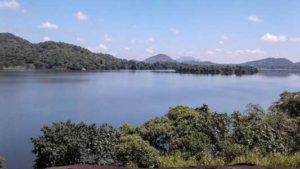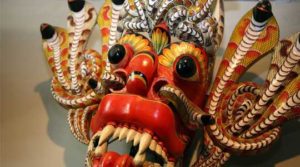Is Sri Lankan Culture Highly Civilised Ancient Civilisation, The Lion’s Nation Middle of Indian Ocean with Alien Touched? Possibility. The Sri Lankan culture is a mixture of modern elements with traditional facets. Its regional diversity is a result of its blending with the Portuguese, the Dutch, the English, West Asian, Middle Eastern, South East Asian, and the South Asian subcontinent. In addition, Theravada Buddhism plays a significant role in shaping the lifestyle of Sri Lanka. Consequently, it has affected Sri Lankan culture in substantial proportions.
SRI LANKAN CULTURE And, IT’S HISTORY

Buddhist philosophy’s influence on Sri Lankan culture is predominantly strong in the southern and central regions of Sri Lanka. History has it that the Portuguese arrived in Sri Lanka in 1505. Sri Lanka was then known to the civilization of the world as Serendib. Their occupation of the maritime region changed the culture of that region. The Dutch fought the Portuguese and were in power from 1658 – 1796. Their influence also became a lasting imprint with certain Dutch words that have been assimilated into Sinhala. Then came the British. They fought the Dutch and came into power in 1802. However, with the fall of the indigenous Kingdom in Kandy in 1815, Sri Lanka became an English crown Colony. The European influence on Sri Lankan culture has had a long-lasting impact. By way of customs, language, religion, and the Roman-Dutch law that still prevails, they encapsulated Sri Lankan culture with a twist of their own valued European cultural elements.
Best Sri Lankan Tours with The Driver. 10% Discounts Available With Traveller Hints. Message on Viber or WhatsApp.
Leel well experience driver in Sri Lanka you to have safe travel around the Island.

EARLY FOREIGN INFLUENCE
Its influence on shaping sensations of architectural feat seen in churches and residences, its forts, hospitals, etc., is vibrant and conspicuous. In fact, with the Portuguese occupation, European influence gave a different twist to Sri Lankan culture. However, before that, the Chinese, the Greeks, the Romans, the Persians, the Arabs, and the Indians visited Sri Lanka only to leave their cultural imprint to a lesser or greater degree. According to Hydroponically, Geographical, and demo political-graphical evidence, Sri Lankan and Its Culture have been one of the planet’s most diverse, highly developed ancient civilizations.
Prehistorical evidence of Sri Lankan Culture
Around 500 BCE, ancient Sri Lankans developed a unique, advanced hydraulic, agricultural civilisation. Achievements include the construction of the largest reservoirs, pumped water on top of Sigiriya rock, and large dams of the ancient world as well as enormous pyramid-like Buddha Stupa. Technologies unknown until today.
48,000-Year-Old Weapons Discovered In Sri Lankan Cave
Researchers have discovered weapons dating back around 45,000 to 48,000 years ago in a cave on the Island. Moreover, evidence has been uncovered for the first time out of Africa.
Evidence of prehistorical human colonization in central Sri Lanka appears at the site of Balangoda. Balangoda Man arrived on the Island at about 34,000 or even early stages. And have been identified as Mesolithic hunter-gatherers who lived in caves.
Cinnamon spice is native to Sri Lanka and has been found in Ancient Egypt, the Middle East, and all over Europe as early as 1500 BCE, suggesting early trade between Egypt, the Middle East on Silk Road, and the Island’s inhabitants. Therefore, Biblical Tarshish was located on the Island. James Emerson Tennent identified Tarshish with Galle.
The hunter-gatherer people are known as the Wanniyala-Aetto or Veddas native people of Island Nation, who still live in the central, Uva, and north-eastern parts of Sri Lanka, are probably direct descendants of the first inhabitants of the country, Balangoda prehistorical man. They may have migrated to Sri Lanka from mainland Asia around the time humans mass-migrated from Africa because of global warming.
Balangoda Man probably created Horton Plains in central Sri Lanka, in the central hills, by burning the trees to catch games—however, the discovery of oats and barley DNA connected to Northern Europe Biodiversity. The plains at about 15,000 BCE suggests that agriculture had already developed at this early date.
Sri Lankan imitations of 4th-century Roman coins and other Europeans Artefacts 4–8th century.

Most importantly, the Portuguese influenced Sri Lankan culture in diverse ways. Their military equipment, their food, their exotic behaviour influenced Sri Lankans.
The portuguese built a fort at Colombo in 1517. Their boots and iron hats, their busy ways, bread they ate and wine they drank perplexed the indigenous community.
In the Sinhalese chronicle Rajavaliya the Portuguese are described as eating hunks of white stone (bread) and drinking blood (wine). Their cannon was described as louder than thunder.

Sri Lankan Culture & It’s Communities
The Sinhalese is the major ethnic group an it comprises of 74% of the population. (Sinhalese are decreasing day by day due to birth control plan) The Tamils are the next community to have a say in the population and it is 12.6%.
There are Sri Lankan moors, Burghers, Malay, a community that has its descent from Black Africans and the aborigines of Sri Lanka called the Veddas.
The Sinhalese and the Tamils
The Sinhalese who are descendants of Aryans arrived on the island probably from far north of Asian continent or west Asia in the late 6th Century B.C.
The legend has it that King Vijaya was the first official King from India to come to this country with his retenue. (The Island civilisation officially mixed with Indian culture).
The Tamils could also have migrated to the northern territories of Sri Lanka from South India.
Sri Lankan history is full of accounts of numerous wars between the Sinhalese kings and the Tamil kings and invaders from India.
What is interesting is the diverse also some of inhuman cultural imprints both these communities have had in shaping the true identity of Sri Lankan culture.

The Sinhalese are the Jewish of Indian Ocean
The Sinhalese are the natives of Sri Lanka without any arguments for nowhere in the world can you find a country where you find Sinhalese governments.
And Shinhaless have been fighting for at least 1,500 years with Indians, winning the game time to time. ( Rama Ravana war and 32 years old previous Civil war with dirty corrupted Indian Political structure & RAW Intelligence)
This idea may cause controversy but it is a fact that emerges from the depths of reality. Though the fact that the Sinhalese are the descendants of Aryans where they really come from, for certain, has not been found. Various DNA evidence has not confirmed it.
High frequencies of afb3 is found in Yunnan and Guangxi provinces of southern China.
The genetic markers of immunoglobulin show high frequencies of afb3 in the Sinhalese.
In Bengali, central Nepali and Northern Indian, southern Han Chinese, Southeast Asian and some Austronesian populations of the pacific islands a high frequency if afb3 is found.
The same genetic aspect is seen among the Sinhalese though the frequency is ab3st.
This frequency is higher among northern Han Chinese, Tibetan, Mongolian, Korean and Japanese populations.
The Transferring TF-Dchi allele is common among East Asian and Native Americans. It is also found among the Sinhalese.
Hum DNI 4 and HumDNI 5 are outstanding DNase 1 genes are among Sinhalese. This is a reality among southern Chinese groups and Tamang people in Nepal.
They have done a study in 1988 which was conducted by N. Soha and it showed high GC 1F and low GC 15 frequencies among the Sinhalese.
This is comparable to the ones of the Chinese, Japanese, Korean, Thai, Malays, Vietnamese, Laotians and Tibetans.
A study done in 1998 by D.E. Hawkey show how dental morphology of the Sinhalese is connected to the Austro-Asiatic population of East and the Northeast India.
Hemoglobin E a variant of normal hemoglobin which originated in and prevalent in Southeast Asia.
This phenomenon is seen as a common feature of the Sinhalese and it is about 40%. Modern Sri lankan DNA mixed with Europeans, Arabs, especially dutch, English, Spanish and Portuguese as well.
Sri Lankan Culture & The Tamils
Though ethnocentric people put forward their own theories about Sri Lankan Tamils, the reality is that they migrated from India 3000 or 4000 years ago. It could be due to population density and lack of enough food. Also, British used poor South Indians on their Sri Lankan Tea plantations as slaves.
Sri Lankan Culture & The Muslims
They may have migrated or (Sinhalese converted as Muslims) back few generations to Sri Lanka due to various trade relations Sri Lanka had with the Arab world.
Basically they came for trade learnt Tamil language and got themselves assimilated into Sri Lankan community along with their cultural diversity inherited by them from their forefathers. And it is doubtless that their origin could be traced to the Arab world.
Sri Lankan Culture & The Malays – The Burghers
They are descendants of Malaysian and Europeans who mixed up with the local community on their own or through intermarriages.
The African-Sri Lankans – The Sri Lankan Kaffirs
They are a small community. They are the descendants of African slaves brought to Sri Lanka during Portuguese occupation of Sri Lanka in the 17th century.
Currently they number around 1000. They are a mixed race consisting of Portuguese, Bantu and native Sri Lankans. They reside basically in Puttalam area in Sri Lanka.
Sri Lankan Culture & The Veddas
The are the aborigines of Sri Lanka. They are known as the descendants of Kuveni and king Vijaya.
Kuveni belonging to the tribe of ‘Yaksha’ betrayed her people to get the kingdom for king Vijaya.
They had two children. But later, king Vijaya chased her away into the forest with the children. They say the Veddas come down from those two children. They live in Mahiyangana and Dabana in Sri Lanka.
Sri Lankan Culture & Festivals in Sri Lanka
Festivals celebrated in Sri Lanka add colour and vigor to Sri Lankan culture. The main festivals in Sri Lanka are the Sinhala and the Tamil new year, the Vesak festival, Diwali, Thai Pongal and Ramadan.
These festivals show various interestingly heart taking aspects of Sri Lankan culture. Mostly because these festivals are festivals of a multi ethnic society. So variety and diversity is a character of Sri Lankan festivals.

The Sinhala and the Tamil New Year
The Sinhalese and the Tamils celebrate in April. New Year is a Sri Lankan harvest festival when the sun moves from Pisces’s house to Aries’s house. The movement is an astrological reality. Various customs can be seen, and such traditions attract tourists.
Religious observations take place. Traditionally an auspicious time is used for various activities.
Sri Lankan food plays a vital role because food has a vibrant and culturally significant role. Various sweetmeats endemic to Sri Lanka are made, shared, and enjoyed. Elders are honored by worshipping them. We see Sri Lankans hospitality at its zenith during these festivals.
Also, Various traditional games are organized. Also, you can see conventional cart races, playing of drums, dances along with so many exciting games climbing the grease pole, pillow fights, bun eating, the blind man hitting the pot, etc. They are fascinating inclusions in the new year festivities. Forgetting past anger, disagreements, etc., and making peace among the society is seen as a cultural entity offering a sheet of betel leaves.

Vesak Festival
The Vesak is predominantly a Buddhist festival. The birth, death, and enlightenment of Lord Buddha are celebrated in this festival. However, the Vesak is culturally significant for tourists to feast their eyes on.
Diwali Festival
The Hindus in Sri Lanka celebrate Diwali. It is a festival of lights and an important occasion for religious observances. They make various traditional sweetmeats for this festival. Lighting lamps have a pivotal role in its festivities.
Ramadan
This Muslim festival is celebrated after fasting for 11-16 hours. The event takes place between May to June, and the days vary according to the Lunar calendar. The fasting period culminates with feasting when they make their traditional foods. ‘Watalappan’ is a delicacy that is endemic to the Muslim community in Sri Lanka. So is biryani a dish with rice, veggies, chicken, and eggs? Also, various sweetmeats such as haluwa, boondi are made during this festival. Sharing food with neighbors and providing for the poor and the marginalized is seen as yet another aspect of Sri Lankan culture connected to the Muslim community in Sri Lanka.
Art, Music, and Drama
These are seen as specific traits of Sri Lankan culture. We have our musical taste, stage dramas, dancing, and puppet shows, a vibrant cultural identity of Sri Lankan culture. Upcountry and down country dancing in Sri Lanka is breathtaking and adds much color and flavor to our Sri Lankan uniqueness. Dancing is used at various festivals, such as cultural processions, weddings, religious ceremonies, and ‘Shanthi Karma’ ( religious performances to cure sick people). These show how rituals and customs are infused into Sri Lankan culture.
Special Cultural Pageants
The ‘Esala Maha Perahera’ is a religious procession with many nicely arrayed elephants, whip dancers, fire dancers, upcountry and down country dancers, tomtom beaters, etc. It plays a significant role in bringing out an outstanding Sri Lankan cultural character for enthusiastic tourists. In this Procession, the sacred tooth relic of Lord Buddha is taken in Procession. The festival takes place in July.
Martial Arts
Sri Lanka’s culture enjoys two kinds of martial arts. They are ‘Cheena di’ and ‘Angampora’.
Customs and Food
Sri Lankan customs date back to 2000 years and is known for their hospitality. Respecting the elders is an age-old value in Sri Lankan culture. It is seen in the extended family systems. Also, its cuisine is known for its specific ability to treat the visitor’s pallet to the maximum. Sri Lankan food is spicy. Its traditional food is milk rice, and its staple food is rice which is eaten with meat, fish, veggies, salads, etc.
Class Conscious and Caste system
Being class-conscious can be seen as a bad quality in Sri Lankan culture, exceptionally high among North East Tamil People, and It comes from India. Though things are vanishing very fast with social changes, we still see it among people in Jaffna; the caste system is adversely seen. The class could be a malignant influence from our neighboring country, India. It is said that in Jaffna, some families do not offer even a glass of water to the person of so-called low caste people. Also, racism is significantly higher among people from Hill countries Sinhalese, especially those living in Kandy.

Marriage and Dowry
Though things are changing in the current context because of education and modernization, some girls still suffer because they need a dowry to be given in marriage. However, some Tamils still practice the Dowry custom strictly in Sri Lanka. As a result, there is a tendency for parents to love male children. However, free education in the country is changing, and females also get educated, and we can see a lot of employed women in the country.
World’s First Female Prime Minister
World’s First Female Prime Minister comes from Sri Lanka – Sirimavo Bandaranaike.
World’s 20th Female Executive President comes from Sri Lanka – Chandrika Bandaranaike.
It is an exemplary aspect of Sri Lankan culture. There are still people resisting the freedom of women, though. Under age, marriage is also vanishing. It is, however, still practiced in rural communities with marginal access to education and resisting new values as to the emancipation of women. Also, under Muslim cultural values, Muslims are still marrying under the age of females.

Visitors to Sri Lanka
If you ever happen to visit Sri Lanka, look for a culture with its own identity. True modernization is influencing the globe. But hospitality, cuisine, cultural heritages, artifacts, and cultural diversity will provide you with an ever-inviting and fascinating place to discern cultural values. Know that they are exciting and make your visit more than a dream come true. Diversity is the word that describes this culture which is bathed in hospitality for you, dear traveler.
In conclusion, what becomes clear is the unique place Sri Lankan culture enjoys with its unique identity in the area of global cultures.
With a history dating back to 2000 years or more, we Sri Lankans have been able to impress upon the international community with a dynamic culture.
Sinhalese and its technologists may have originated from the early touch of Aliens. But unfortunately, the entire nation has sunk into a depth of corruption without discipline.
More Sri Lankan Travel Blogs Here!
- Hikkaduwa Beach Party Info
- Train Travel Sri Lanka
- Holiday In Sri Lanka Itinerary
- Drink Coconut Water in Sri Lanka
- Beautiful Tranquil Beaches – Sri Lanka
- Beautiful Waterfalls in Sri Lanka
- Sri Lankan Tea and British Heritage
- Mihintale Rock Climbing Travel Information
- The Royal Botanical Garden Travel Information
- Popular SRI LANKAN TRAVEL Destinations Info Guide
- Visit Sri Lanka for Tropical Fruits
- Best of Sri Lanka Exotic Fruits
 TravellerHints!
TravellerHints! 

